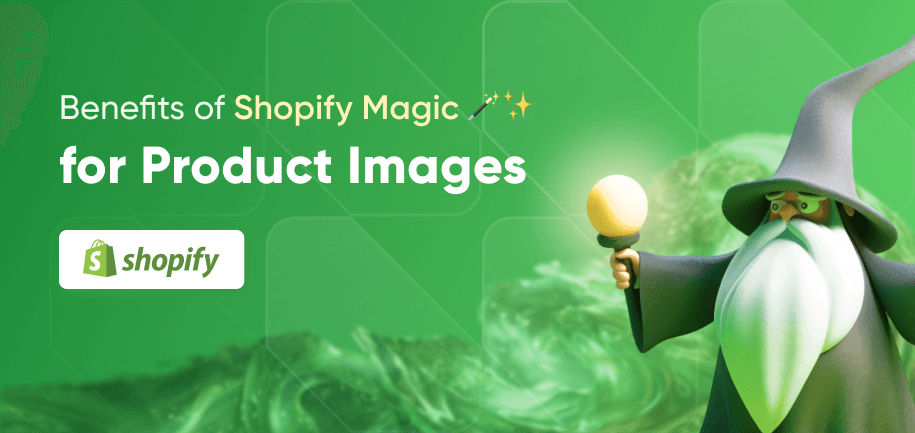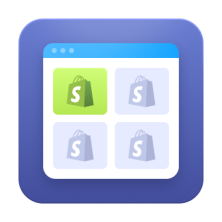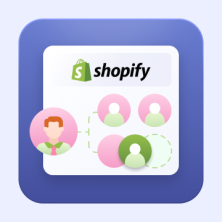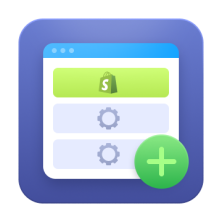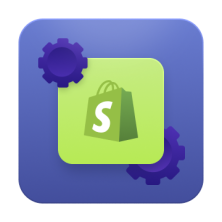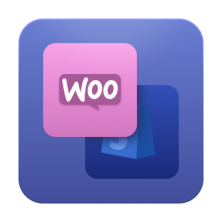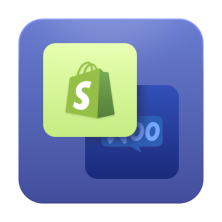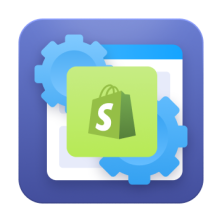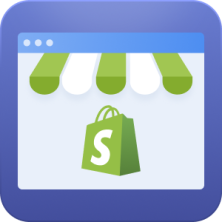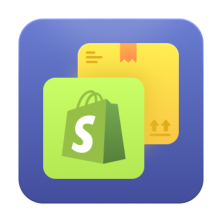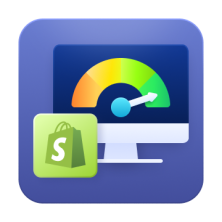As a Shopify e-commerce merchant or manager, you create all kinds of web pages to meet certain goals. And just as you make your ‘About’ page to position your brand, you design a landing page for a purpose as well. When utilized well, this type of web page becomes a helpful tool in your marketing and sales funnels.
Keep reading for an in-depth view of what a landing page is and how to create a landing page on your Shopify store to boost your sales.
What Is a Shopify Landing Page?
Shopify landing pages are dedicated web pages where visitors arrive after clicking on your marketing or advertising links, such as those in social media posts or ads. These pages are integral to your marketing or sales funnel, helping you guide potential customers through their buying journey.
A Shopify landing page is focused on the one action you want these visitors to take. You can have many landing pages that each encompass one action of converting a visitor into a customer, subscriber, or follower. You might want to build a landing page in Shopify that compels people to:
- Buy or subscribe to a product
- Fill out a form
- Sign up for a newsletter
- Call your representative
- Provide feedback or write a review, etc.
In other words, the main purpose of a Shopify landing page is to get the visitors to take that specific action, so the entire page is built around directing the visitor to the goal you have set. Naturally, you can have numerous landing pages for different goals.
Shopify Landing Page vs. Shopify Homepage: Key Differences
A Shopify store homepage is sometimes considered to be a type of Shopify landing pages. However, it’s best to differentiate the two since they have little in common.
Your Shopify homepage has an overarching goal of showing what your company is like and what it does. Hence, it’s a broader page that provides a hub to catch online searchers who searched for your company or entered the direct URL after learning about you The Shopify homepage then directs people to different parts of the website depending on what they are looking for. Some links may even lead to landing pages.
When people end up on your Shopify landing page, it’s more likely that they are interested in a specific offer rather than your company in general. After all, they clicked through from an ad or post to reach this landing page. These visitors are more ready for conversion, so this is, basically, your key Shopify sales page.
For a better understanding, here’s a Shopify homepage vs landing page comparison table:
Feature | Shopify Homepage | Shopify Landing Page |
|---|---|---|
Purpose | General overview of the entire store. | Focused on a specific product, service, or campaign. |
Audience | Broad audience including new visitors and returning customers. | Targeted audience driven by specific marketing efforts. |
Content | Wide range of content including product categories, featured items, and blog links. | Tailored content specific to the marketing campaign or offer, with a strong emphasis on a single product or service. |
Call-to-Action (CTA) | Multiple CTAs, encouraging various actions such as browsing, subscribing, and purchasing. | Single or limited CTAs focused on a specific action, such as a “Buy Now” button or a “Sign Up” form. |
Design | Comprehensive design that showcases the brand identity and multiple navigation options. | Minimalist design to reduce distractions and keep the focus on the CTA. |
Navigation | Full navigation menu with links to various sections of the store. | Limited or no navigation links to prevent visitors from leaving the page. |
SEO | Optimized for broad search terms related to the overall business. | Optimized for specific keywords that are likely to convert, targeting visitors ready to make a purchase. |
Trust Elements | General trust elements such as reviews, testimonials, and security badges throughout. | Specific trust elements related to the product or offer, such as targeted testimonials and guarantees. |
Targeting | Broad targeting to attract a wide range of visitors. | Highly specific targeting based on the marketing campaign, aiming to attract visitors with a high likelihood of conversion. |
Lead Capture | May include multiple forms for newsletter sign-ups, account creation, etc. | Simple, focused forms to capture visitor information relevant to the campaign, such as email addresses for a specific offer. |
Performance Tracking | General analytics to track overall site performance and visitor behavior. | Detailed tracking to measure the effectiveness of the specific campaign, including conversion rates and visitor interactions on the landing page. |
Loading Speed | Optimized for general site performance, balancing content and speed. | Highly optimized for fast loading times to reduce bounce rates and keep the visitor focused on the offer. |
Brand Consistency | Strong brand consistency with full brand elements. | Consistent with the overall brand but with a focus on the campaign’s branding and message. |
Mobile Optimization | Fully responsive design for browsing across various devices. | Specifically optimized for mobile users to ensure a seamless experience and quick load times, particularly for campaign-specific visitors. |
Key 5 Types of Shopify Landing Pages
In terms of whether the landing page is the final destination or not, what purpose it plays, and what information it offers, there are 5 main Shopify landing page templates.
Lead Generation Pages
Also known as opt-in or squeeze pages, these landing pages are designed to capture visitor information such as email addresses in exchange for valuable content, discounts, or newsletters. Lead capture pages typically have a simple design focused on a single conversion goal: getting visitors to fill out a form and submit their contact details.
Click-Through Pages
A click-through landing page is designed with the primary goal of persuading visitors to click through to another page, often to complete a purchase or to learn more detailed information about a product or service. Unlike lead-generation pages that focus on capturing visitor information, click-through pages focus on encouraging visitors to take the next step in the buying process.
Product Pages
These landing pages focus on showcasing specific products or product categories. They typically include detailed product descriptions, high-quality images or videos, pricing information, and customer reviews. Product pages aim to convert visitors into customers by providing key information and a call-to-action to encourage purchases.
Collection Pages
Collection pages group related products together based on categories, themes, or collections. They serve to organize products in a visually appealing manner, making it easier for customers to browse and discover items of interest. Collection pages often include filters and sorting options to refine search results, enhancing the shopping experience.
Promotional Pages
These landing pages are created specifically for running promotional campaigns, such as sales events, seasonal offers, or product launches. They highlight the promotion details prominently, feature compelling visuals or videos, and include persuasive copywriting to encourage immediate action from visitors.
Benefits of Shopify Landing Pages
Why should you use landing pages for your Shopify store? Here's a very simple but decisive fact: Shopify landing pages have the highest conversion rate (23%) compared to other types of sign-up forms, including pop-ups (only 3%).
The reason for this success is simple: landing pages help your company be focused and persuasive toward one goal. Rather than provide a lot of information, the landing page helps you target and achieve a specific step. Other benefits of landing pages include:
- Focused User Navigation – Shopify landing page meets visitors where they are and takes them to the next step. This is a more effective tactic than bringing them to a homepage or generic page where they will have to figure out what to do next on their own (and probably won’t make it to the end of the funnel).
- Improved SEO Performance – Well-optimized Shopify landing pages can contribute to improved search engine optimization (SEO) performance. By targeting specific keywords and providing valuable content, these pages can attract organic traffic and improve overall visibility in search engine results.
- Integration with Marketing Campaigns – Landing pages integrate with various marketing channels and campaigns, such as email marketing, social media promotions, and pay-per-click advertising. They serve as dedicated destinations for campaign traffic.
- Quick Setup and Deployment: Shopify provides user-friendly tools and templates for creating landing pages quickly without the need for extensive coding knowledge. This agility allows businesses to launch campaigns rapidly and respond swiftly to market trends or seasonal opportunities.
- Cost-effectiveness – Compared to traditional marketing tactics, Shopify landing pages offer a cost-effective way to drive targeted traffic and achieve measurable results. They enable businesses to maximize their marketing budget by focusing resources on high-converting strategies and campaigns.
How to Create a Landing Page on Shopify
Now, let’s finally look at the answer to the question of how to make a landing page in Shopify.
Step 1: Determine the Offering and Focus
- First, decide on the specific product, service, or campaign you want to promote.
- Tailor your messaging to match the marketing source that will drive traffic to this page.
- Ensure you have a clear value proposition that explains the benefits to the visitor.
Step 2: Build the Page
Combine written and design elements to create a cohesive and engaging page:
- Write compelling copy that highlights the value of your offering.
- Use strong call-to-action buttons that encourage visitors to take the desired action (e.g., "Buy Now," "Sign Up").
- Include trust elements such as badges, testimonials, or guarantees to build credibility.
- Ensure the design has minimal distractions to keep the focus on the CTA.
- Make the page responsive for usability on all devices and ensure it has fast loading times.
- Use brand colors, logos, and fonts to maintain a cohesive look and feel with the rest of your website.
- Add simple forms to collect visitor information (e.g., email addresses) if needed.
- Limit or remove navigation links to keep visitors focused on the landing page.
Step 3: Launch the Page
Once everything is set up and reviewed, publish your landing page (see next section, “How to Add a Landing Page to Shopify”).
Step 4: Track and Adjust
Monitor the performance of your landing page using analytics tools.
- Make adjustments as necessary to optimize for better conversions.
- Test different elements like headlines, images, and CTAs.
- Refine the page based on visitor behavior and feedback.
To sum up, keep the page simple, include a value proposition coinciding with the focus, use only one call-to-action, and make the copy interesting and persuasive. Make sure the landing page loads quickly and looks right on mobile devices. It’s also advisable to optimize the page for SEO and to A/B test it for the best results.
How to Add a Landing Page to Shopify
There are two options for setting up a landing page in Shopify:
Using Shopify's Built-in Tools
- Log in to your Shopify account.
- Navigate to "Online Store" in the left-hand menu.
- Click "Pages" or "Navigation" > "Add page".
- Enter a title and add content via text editor.
- Shopify will generate a URL that you can customize if needed.
- Save and click "Publish".
Using Shopify Apps
- Install a landing page Shopify app from the Shopify App Store.
- Launch the app from your Shopify admin.
- Use the app's tools to create and design your landing page.
- Add content, images, forms, and CTAs.
- Preview and click "Publish" to make it live.
Tools and Resources for Building Landing Pages
You don’t have to completely build a landing page on your own. Some numerous tools and resources make it easier to make a Shopify landing page. Here are a few to help:
- Find a landing page builder or hire a Shopify expert to create a page for you.
- Hire a content writer to craft engaging content and use Shopify AI content apps for generating product descriptions or metadata.
- Use a Shopify landing page template or take your page to the next level with custom theme development.
- Use any of the many Shopify SEO apps available to optimize your page.
Best Practices for Landing Pages
According to landing page statistics collected by Hubspot, here are some of the factors to include on the page that improve conversion:
- Adding a video to the landing page.
- Using personalized calls to action.
- Directly addressing buyers' fears on the page (for instance, by telling them you will respect the privacy of the information they provide).
For the sign-up form on the page, Hubspot information showed that you only need to ask for the person's name and email address. Other than that, companies see varying results when asking for additional information, so you may want to experiment with that.
Landing Page Shopify SEO Strategies
To maximize the visibility of your Shopify landing page, you can utilize SEO strategies. This approach not only attracts visitors from targeted campaigns but also brings organic traffic directly to your landing page.
Focus on Conversion-Ready Keywords
The SEO for a landing page should target people who are ready to convert. Unlike generic keywords or those aimed at information seekers, your keywords should be directly related to your offer. Potential customers at this stage are likely searching for specific queries such as “where to buy [product]” or “which [type of product] is better.”
Conduct Keyword and Customer Research
To identify the best keywords for your landing page, perform thorough keyword and customer research. Understand what your potential customers are looking for at this stage of the buying process and pay attention to their common questions and objections. Then, use tools like Google Keyword Planner, Ahrefs, or SEMrush to find keywords that are specific to your product and have a high intent to purchase.
Implementing SEO on Your Landing Page
Once you have identified the right keywords, incorporate them into the following elements of your landing page:
- Page Title and Meta Description: Ensure these contain your primary keywords and clearly convey the offer.
- Headings and Subheadings: Use keywords in your H1, H2, and other heading tags to structure the content effectively.
- Body Text: Naturally integrate keywords throughout your copy without keyword stuffing.
- Alt Text for Images: Include relevant keywords in the alt text of your images to enhance SEO.
Successful Shopify Landing Page Examples
One of the best ways to learn how to do something well is to look at successful examples and learn from them. This doesn’t mean you should directly copy what another store is doing or lose your own branding in the process, but looking at examples can offer some direction and give you a general idea of what works and what doesn’t.
PopSockets - Phone Accessories
PopSockets’ ‘Custom’ landing page integrates a virtual design studio feature, allowing visitors to upload custom images, add text, use AI image generation, and preview the final product in 3D.

Success: By providing an interactive and personalized shopping experience, PopSockets enhances customer engagement and reduces in-house custom design efforts.
Barner - Eyewear
Barner utilizes a landing page that integrates interactive quizzes or surveys related to eyewear preferences and personal style.

Success: This approach not only engages visitors by offering personalized recommendations but also collects valuable data to tailor marketing strategies and product offerings.
Bambooee - Pillows
Bambooee employs a landing page ‘Our Story’ that includes a scrolling narrative or story format, detailing the motivations and aspirations of the creators behind these bamboo-based products.

Success: This storytelling approach educates consumers about the brand’s mission and sustainability efforts, resonating with shoppers and differentiating Bambooee from competitors.
We’d also recommend exploring the 50 most successful Shopify stores. Take a look at their landing pages and ask yourself – what makes them effective? Compare what they are doing with the best practices we covered in this article to create your own willing Shopify landing page.















